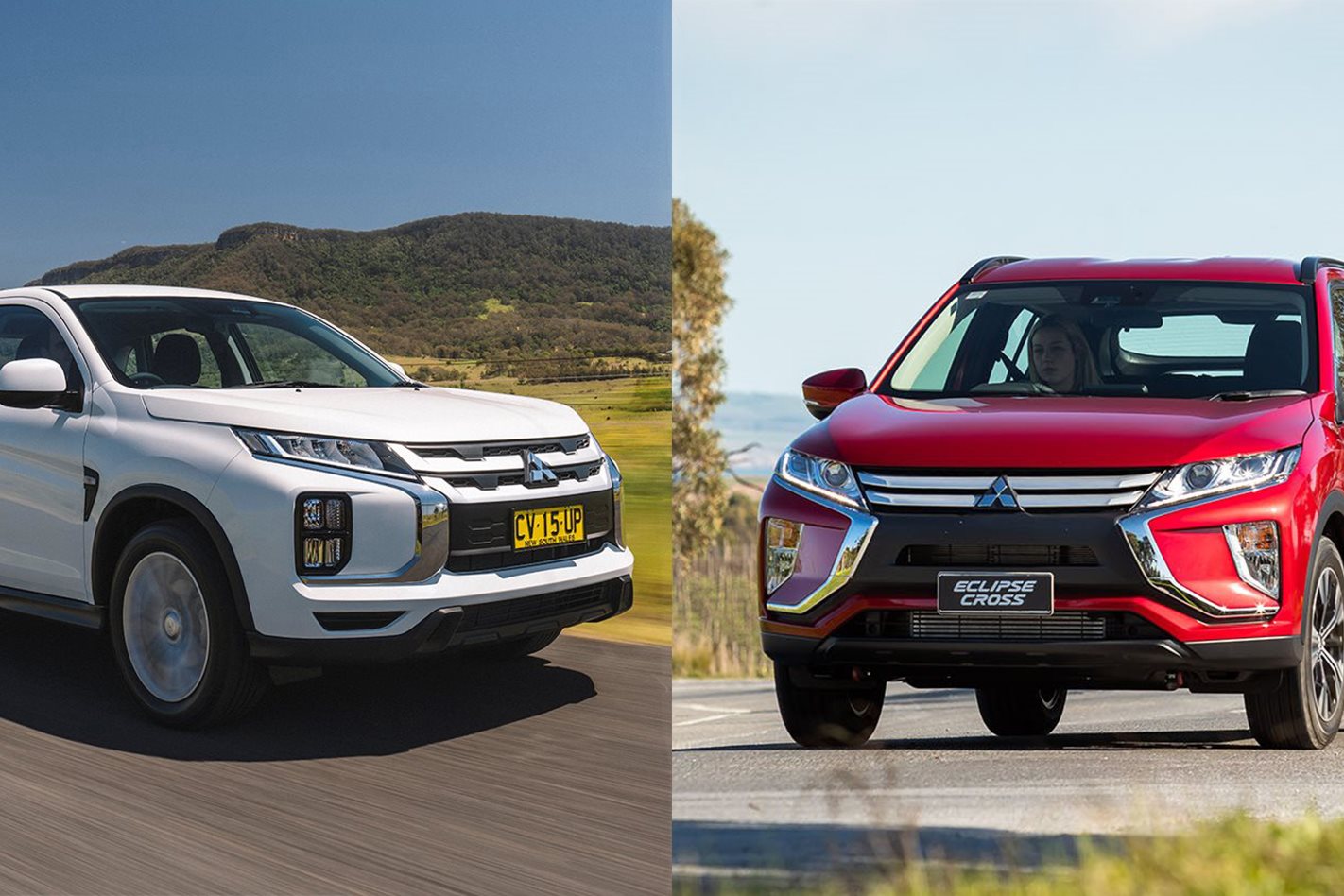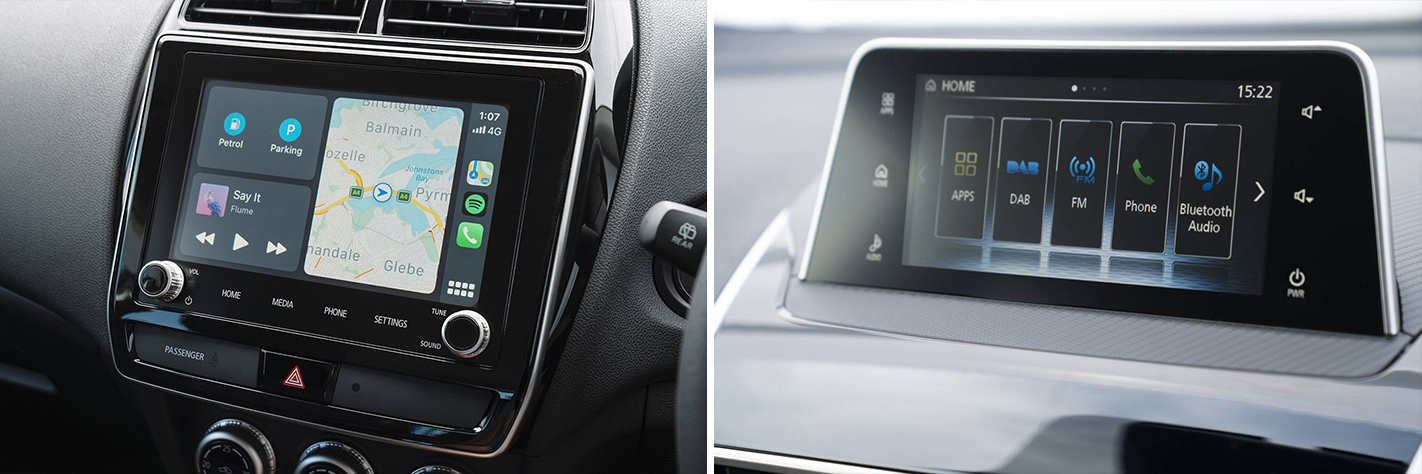
Introduced in 2017, Mitsubishi’s newest offering, the Eclipse Cross, is pitched as the model that bridges the gap between the Mitsubishi ASX and Outlander. And while this may be the case in terms of pricing, it has a lot in common with the ASX when it comes to size and practicality.
The ASX (below left) is Australia’s most popular small SUV mainly due to its sharp pricing, which starts from $23,990 for the ES manual. Add a CVT auto and the price jumps to $25,990, which is still $4000 less than the entry-level Eclipse Cross ES ($29,990) that comes with CVT as standard.

So what does paying extra for Eclipse Cross ES get you over the ASX ES, considering both cars have the same 1810mm width and 2670mm wheelbase?
The Eclipse Cross is powered by a 1.5-litre turbocharged four-cylinder petrol engine that produces the same power as the ASX’s naturally aspirated 2.0-litre engine, but considerably more torque.
Like the ASX, the cheapest version is front-wheel drive, and fuel use is about the same between the two – 7.3L/100km compared with the CVT-equipped ASX’s 7.6L/100km.

Its 341-litre boot space can be extended to 448 litres via rear seats that can recline and slide forward, while the ASX holds 393 litres. And if you need a trailer to carry more, the Eclipse Cross will tow up to 1600kg, compared with the ASX’s 1300kg – each has a maximum unbraked towing capacity of 750kg.
Looking inside, the Eclipse Cross has attractive new-generation styling that should give it an edge over the ageing ASX in the showroom.
The Eclipse Cross has 7.0-inch infotainment screen, with ASX gaining an 8.0-inch screen in its recent update. Both have Apple CarPlay and Android Auto smartphone mirroring, digital radio, four-speaker sound system and reversing camera, with the newer car gaining satellite navigation and a touchpad controller on the centre console.

Other standard features common to both cars include autonomous emergency braking, cruise control, LED daytime running light, six airbags and leather-bound steering wheel.
The Eclipse Cross ES meanwhile gains an adjustable speed limiter, digital instrument display, sliding and reclining second-row seats, roof rails and heated door mirrors.
A big plus for the ASX ES, however, is the availability of an advanced driver assistance system package (ADAS) that adds lane departure warning, blind-spot monitor, lane-change assist, rear-cross traffic alert and auto high beam. The ADAS pack adds $1500 to the price of the ASX ES Auto, with the total price still $2550 less than the Eclipse Cross ES.




